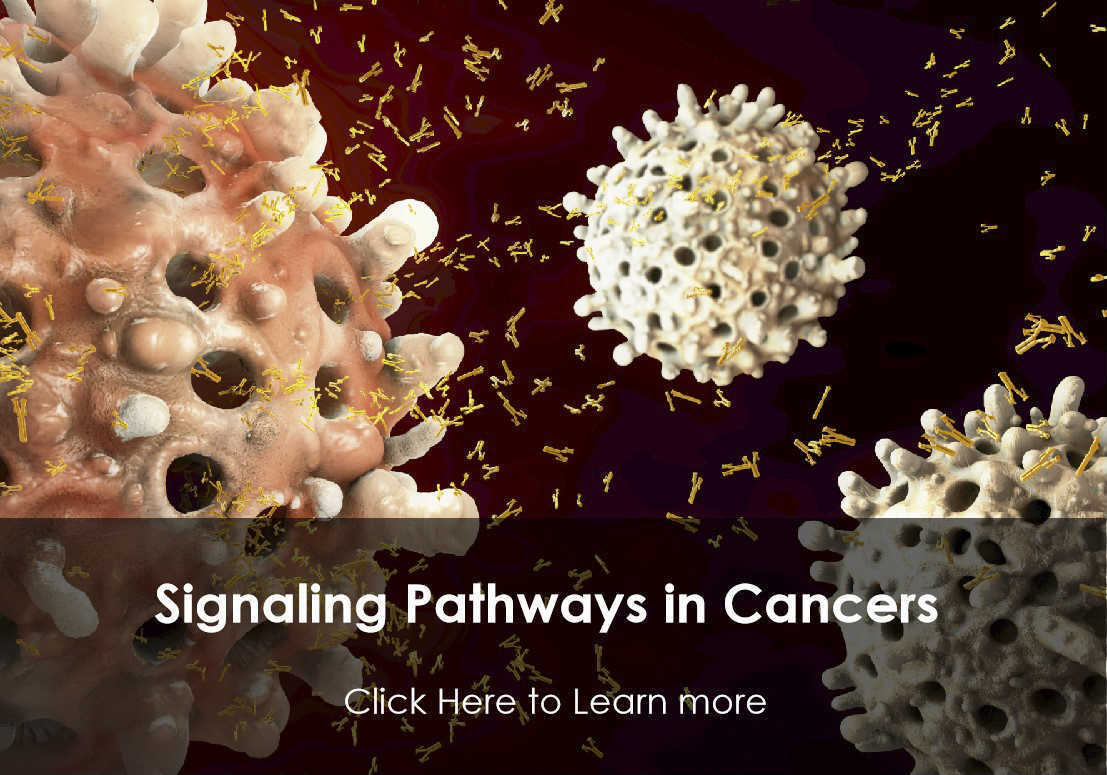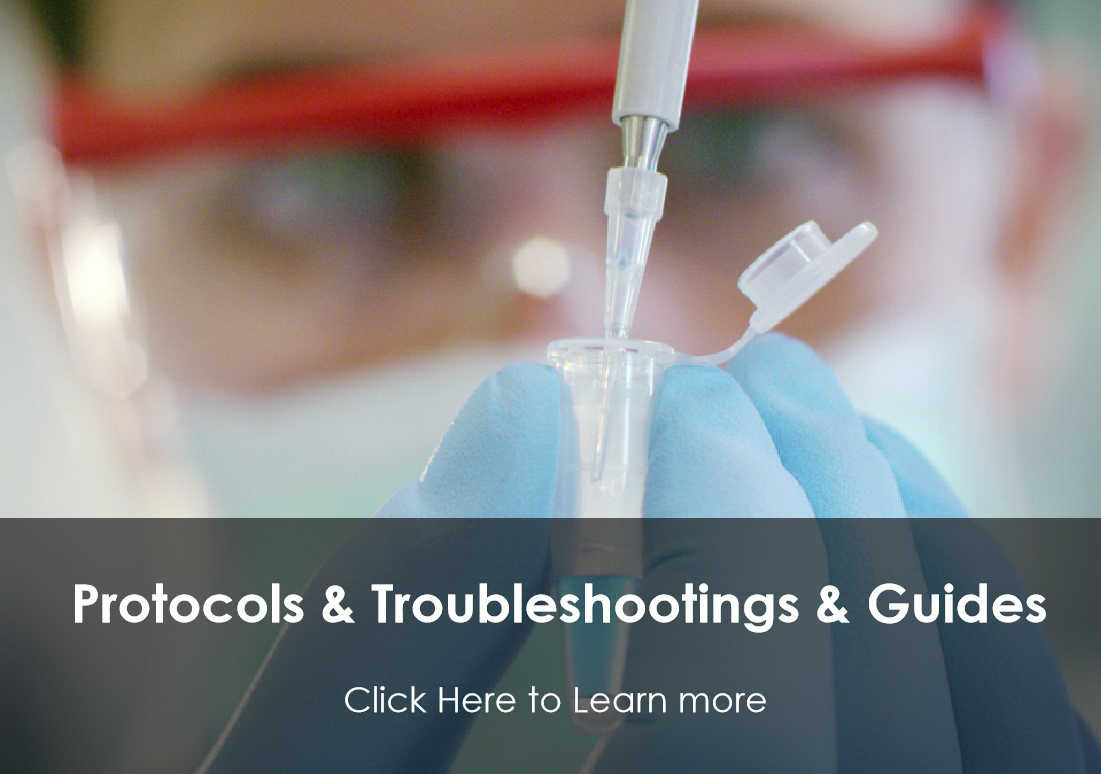ITGB4
Integrins are heterodimers comprised of alpha and beta subunits, that are noncovalently associated transmembrane glycoprotein receptors. Different combinations of alpha and beta polypeptides form complexes that vary in their ligand-binding specificities. Integrins mediate cell-matrix or cell-cell adhesion, and transduced signals that regulate gene expression and cell growth. This gene encodes the integrin beta 4 subunit, a receptor for the laminins. This subunit tends to associate with alpha 6 subunit and is likely to play a pivotal role in the biology of invasive carcinoma. Mutations in this gene are associated with epidermolysis bullosa with pyloric atresia. Multiple alternatively spliced transcript variants encoding distinct isoforms have been found for this gene. [provided by RefSeq, Jul 2008]
Full Name
Integrin Subunit Beta 4
Function
Integrin alpha-6/beta-4 is a receptor for laminin. Plays a critical structural role in the hemidesmosome of epithelial cells. Is required for the regulation of keratinocyte polarity and motility. ITGA6:ITGB4 binds to NRG1 (via EGF domain) and this binding is essential for NRG1-ERBB signaling (PubMed:20682778).
ITGA6:ITGB4 binds to IGF1 and this binding is essential for IGF1 signaling (PubMed:22351760).
ITGA6:ITGB4 binds to IGF2 and this binding is essential for IGF2 signaling (PubMed:28873464).
ITGA6:ITGB4 binds to IGF1 and this binding is essential for IGF1 signaling (PubMed:22351760).
ITGA6:ITGB4 binds to IGF2 and this binding is essential for IGF2 signaling (PubMed:28873464).
Biological Process
AutophagyManual Assertion Based On ExperimentIMP:UniProtKB
Cell adhesion1 PublicationNAS:ProtInc
Cell adhesion mediated by integrinManual Assertion Based On ExperimentIBA:GO_Central
Cell migrationManual Assertion Based On ExperimentIBA:GO_Central
Cell motilityManual Assertion Based On ExperimentIMP:UniProtKB
Cell-matrix adhesionManual Assertion Based On ExperimentIMP:UniProtKB
Filopodium assemblyIEA:Ensembl
Hemidesmosome assemblyManual Assertion Based On ExperimentIDA:UniProtKB
Integrin-mediated signaling pathwayManual Assertion Based On ExperimentIBA:GO_Central
Mesodermal cell differentiationManual Assertion Based On ExperimentIEP:UniProtKB
Nail developmentManual Assertion Based On ExperimentIMP:UniProtKB
Peripheral nervous system myelin formationIEA:Ensembl
Response to woundingManual Assertion Based On ExperimentIDA:UniProtKB
Skin morphogenesisManual Assertion Based On ExperimentIMP:UniProtKB
Trophoblast cell migrationIEA:Ensembl
Cell adhesion1 PublicationNAS:ProtInc
Cell adhesion mediated by integrinManual Assertion Based On ExperimentIBA:GO_Central
Cell migrationManual Assertion Based On ExperimentIBA:GO_Central
Cell motilityManual Assertion Based On ExperimentIMP:UniProtKB
Cell-matrix adhesionManual Assertion Based On ExperimentIMP:UniProtKB
Filopodium assemblyIEA:Ensembl
Hemidesmosome assemblyManual Assertion Based On ExperimentIDA:UniProtKB
Integrin-mediated signaling pathwayManual Assertion Based On ExperimentIBA:GO_Central
Mesodermal cell differentiationManual Assertion Based On ExperimentIEP:UniProtKB
Nail developmentManual Assertion Based On ExperimentIMP:UniProtKB
Peripheral nervous system myelin formationIEA:Ensembl
Response to woundingManual Assertion Based On ExperimentIDA:UniProtKB
Skin morphogenesisManual Assertion Based On ExperimentIMP:UniProtKB
Trophoblast cell migrationIEA:Ensembl
Cellular Location
Cell membrane; Cell junction, hemidesmosome. Colocalizes with DST at the leading edge of migrating keratinocytes.
Involvement in disease
Epidermolysis bullosa letalis, with pyloric atresia (EB-PA):
An autosomal recessive, frequently lethal, epidermolysis bullosa with variable involvement of skin, nails, mucosa, and with variable effects on the digestive system. It is characterized by mucocutaneous fragility, aplasia cutis congenita, and gastrointestinal atresia, which most commonly affects the pylorus. Pyloric atresia is a primary manifestation rather than a scarring process secondary to epidermolysis bullosa.
Generalized atrophic benign epidermolysis bullosa (GABEB):
A non-lethal, adult form of junctional epidermolysis bullosa characterized by life-long blistering of the skin, associated with hair and tooth abnormalities.
Epidermolysis bullosa simplex, Weber-Cockayne type (WC-EBS):
A form of intraepidermal epidermolysis bullosa characterized by blistering limited to palmar and plantar areas of the skin.
An autosomal recessive, frequently lethal, epidermolysis bullosa with variable involvement of skin, nails, mucosa, and with variable effects on the digestive system. It is characterized by mucocutaneous fragility, aplasia cutis congenita, and gastrointestinal atresia, which most commonly affects the pylorus. Pyloric atresia is a primary manifestation rather than a scarring process secondary to epidermolysis bullosa.
Generalized atrophic benign epidermolysis bullosa (GABEB):
A non-lethal, adult form of junctional epidermolysis bullosa characterized by life-long blistering of the skin, associated with hair and tooth abnormalities.
Epidermolysis bullosa simplex, Weber-Cockayne type (WC-EBS):
A form of intraepidermal epidermolysis bullosa characterized by blistering limited to palmar and plantar areas of the skin.
Topology
Extracellular: 28-710
Helical: 711-733
Cytoplasmic: 734-1822
Helical: 711-733
Cytoplasmic: 734-1822
PTM
Palmitoylated by DHHC3 at several cysteines of the membrane-proximal region, enhancing stability and cell surface expression. Palmitoylation also promotes secondary association with tertaspanins.
View more
Anti-ITGB4 antibodies
+ Filters
 Loading...
Loading...
Target: ITGB4
Host: Mouse
Antibody Isotype: IgG2b
Specificity: Human
Clone: 422325
Application*: F
Target: ITGB4
Host: Rat
Antibody Isotype: IgG2b
Specificity: Human
Clone: 439-9B
Application*: F, C, P, IP, WB
Target: ITGB4
Host: Rat
Antibody Isotype: IgG2a
Specificity: Mouse
Clone: 308601
Application*: F, C, WB
Target: ITGB4
Host: Mouse
Antibody Isotype: IgG2a
Specificity: Human
Clone: A699
Application*: ELISA, FC, ICC, IF, IHC, IP, WB
Target: ITGB4
Host: Mouse
Antibody Isotype: IgG2b
Specificity: Human
Clone: 7H253
Application*: E, FC, IF, WB
Target: ITGB4
Host: Mouse
Antibody Isotype: IgG1
Specificity: Human
Clone: 2Q796
Application*: FC, IF, IP
Target: ITGB4
Host: Mouse
Antibody Isotype: IgG1, κ
Specificity: Human
Clone: 2Q793
Application*: FC, IH, IP
Target: ITGB4
Host: Mouse
Antibody Isotype: IgG2a, κ
Specificity: Human
Clone: UM-A9
Application*: E
Target: ITGB4
Host: Mouse
Antibody Isotype: IgG1, κ
Specificity: Human
Clone: CBYY-C2782
Application*: IS
Target: ITGB4
Host: Mouse
Antibody Isotype: IgG2a
Specificity: Human
Clone: CBYY-C0659
Application*: F, WB
Target: ITGB4
Host: Mouse
Antibody Isotype: IgG2a
Specificity: Human
Clone: UMA9
Application*: WB, F, E, IF, IP, C, MC, BL, FN
Target: ITGB4
Host: Mouse
Antibody Isotype: IgG2a
Specificity: Human
Clone: 7H228
Application*: C, WB
Target: ITGB4
Host: Mouse
Antibody Isotype: IgG1
Specificity: Human
Clone: 7/CD104
Application*: WB, IF
Target: ITGB4
Host: Mouse
Antibody Isotype: IgG2a, κ
Specificity: Human
Clone: 58XB4
Application*: F, IP, E
Target: ITGB4
Host: Mouse
Antibody Isotype: IgG1, κ
Specificity: Human
Clone: 2Q794
Application*: F, IH, IP
Target: ITGB4
Host: Mouse
Antibody Isotype: IgG2a, κ
Specificity: Human
Clone: 2Q792
Application*: F, IH, IP
Target: ITGB4
Host: Mouse
Antibody Isotype: IgG1
Specificity: Human
Clone: 10B10D5
Application*: F, C, WB
Target: ITGB4
Host: Mouse
Antibody Isotype: IgG1
Specificity: Human
Clone: 450-9D
Application*: C, P, WB, CC
Target: ITGB4
Host: Mouse
Antibody Isotype: IgG1
Specificity: Human
Clone: 3H1804
Application*: F, IH, IP, WB
Target: ITGB4
Host: Rat
Antibody Isotype: IgG2a, κ
Specificity: Mouse
Clone: 346-11A
Application*: F
Target: ITGB4
Host: Mouse
Antibody Isotype: IgG
Specificity: Human
Clone: 5C2
Application*: E, F
Target: ITGB4
Host: Mouse
Antibody Isotype: IgG2a
Specificity: Human
Clone: CBT3967
Application*: WB, IH, F
Target: ITGB4
Host: Mouse
Antibody Isotype: IgG2a
Specificity: Human
Clone: CBT3326
Application*: IH, IC, F
Target: ITGB4
Host: Mouse
Antibody Isotype: IgG1
Specificity: Human
Clone: CBT4012
Application*: IH, F
Target: ITGB4
Host: Rat
Antibody Isotype: IgG2a, κ
Specificity: Mouse
Clone: CBXC-1561
Application*: IH, IP, WB
Target: ITGB4
Host: Human
Antibody Isotype: IgG1
Specificity: Human
Clone: CBXC-0762
Application*: F
Target: ITGB4
Host: Mouse
Antibody Isotype: IgG1
Specificity: Human
Clone: CBYY-C0556
Application*: WB, IF
Target: ITGB4
Host: Mouse
Antibody Isotype: IgG1
Specificity: Human
Clone: CBYY-C0150
Application*: F, IH, IP, WB
Target: ITGB4
Host: Mouse
Antibody Isotype: IgG1
Specificity: Human
Clone: CBFYC-2849
Application*: F, IH, WB
Target: ITGB4
Host: Mouse
Antibody Isotype: IgG1
Specificity: Human
Clone: CBYY-I1521
Application*: IP, C, F, I
More Infomation
Hot products 
-
Mouse Anti-BIRC7 Recombinant Antibody (88C570) (CBMAB-L0261-YJ)

-
Mouse Anti-CA9 Recombinant Antibody (CBXC-2079) (CBMAB-C0131-CQ)

-
Mouse Anti-BBS2 Recombinant Antibody (CBYY-0253) (CBMAB-0254-YY)

-
Mouse Anti-F11R Recombinant Antibody (402) (CBMAB-0026-WJ)

-
Rat Anti-EMCN Recombinant Antibody (28) (CBMAB-E0280-FY)

-
Mouse Anti-AP4E1 Recombinant Antibody (32) (CBMAB-A2996-YC)

-
Rat Anti-CCR2 Recombinant Antibody (475301) (CBMAB-C1338-LY)

-
Mouse Anti-CAT Recombinant Antibody (724810) (CBMAB-C8431-LY)

-
Mouse Anti-ARID1B Recombinant Antibody (KMN1) (CBMAB-A3546-YC)

-
Rabbit Anti-BAD (Phospho-Ser136) Recombinant Antibody (CAP219) (CBMAB-AP536LY)

-
Mouse Anti-ATP1A2 Recombinant Antibody (M7-PB-E9) (CBMAB-A4013-YC)

-
Mouse Anti-BPGM Recombinant Antibody (CBYY-1806) (CBMAB-2155-YY)

-
Mouse Anti-CSPG4 Recombinant Antibody (CBFYM-1050) (CBMAB-M1203-FY)

-
Mouse Anti-ATP1B3 Recombinant Antibody (1E9) (CBMAB-A4021-YC)

-
Rabbit Anti-ABL1 (Phosphorylated Y185) Recombinant Antibody (V2-443434) (PTM-CBMAB-0001YC)

-
Rabbit Anti-ATF4 Recombinant Antibody (D4B8) (CBMAB-A3872-YC)

-
Mouse Anti-CDK7 Recombinant Antibody (CBYY-C1783) (CBMAB-C3221-YY)

-
Mouse Anti-ADIPOR1 Recombinant Antibody (V2-179982) (CBMAB-A1368-YC)

-
Mouse Anti-ALB Recombinant Antibody (V2-363290) (CBMAB-S0173-CQ)

-
Mouse Anti-CD19 Recombinant Antibody (CBXC-1224) (CBMAB-C1491-CQ)

For Research Use Only. Not For Clinical Use.
(P): Predicted
* Abbreviations
- AActivation
- AGAgonist
- APApoptosis
- BBlocking
- BABioassay
- BIBioimaging
- CImmunohistochemistry-Frozen Sections
- CIChromatin Immunoprecipitation
- CTCytotoxicity
- CSCostimulation
- DDepletion
- DBDot Blot
- EELISA
- ECELISA(Cap)
- EDELISA(Det)
- ESELISpot
- EMElectron Microscopy
- FFlow Cytometry
- FNFunction Assay
- GSGel Supershift
- IInhibition
- IAEnzyme Immunoassay
- ICImmunocytochemistry
- IDImmunodiffusion
- IEImmunoelectrophoresis
- IFImmunofluorescence
- IGImmunochromatography
- IHImmunohistochemistry
- IMImmunomicroscopy
- IOImmunoassay
- IPImmunoprecipitation
- ISIntracellular Staining for Flow Cytometry
- LALuminex Assay
- LFLateral Flow Immunoassay
- MMicroarray
- MCMass Cytometry/CyTOF
- MDMeDIP
- MSElectrophoretic Mobility Shift Assay
- NNeutralization
- PImmunohistologyp-Paraffin Sections
- PAPeptide Array
- PEPeptide ELISA
- PLProximity Ligation Assay
- RRadioimmunoassay
- SStimulation
- SESandwich ELISA
- SHIn situ hybridization
- TCTissue Culture
- WBWestern Blot

Online Inquiry







